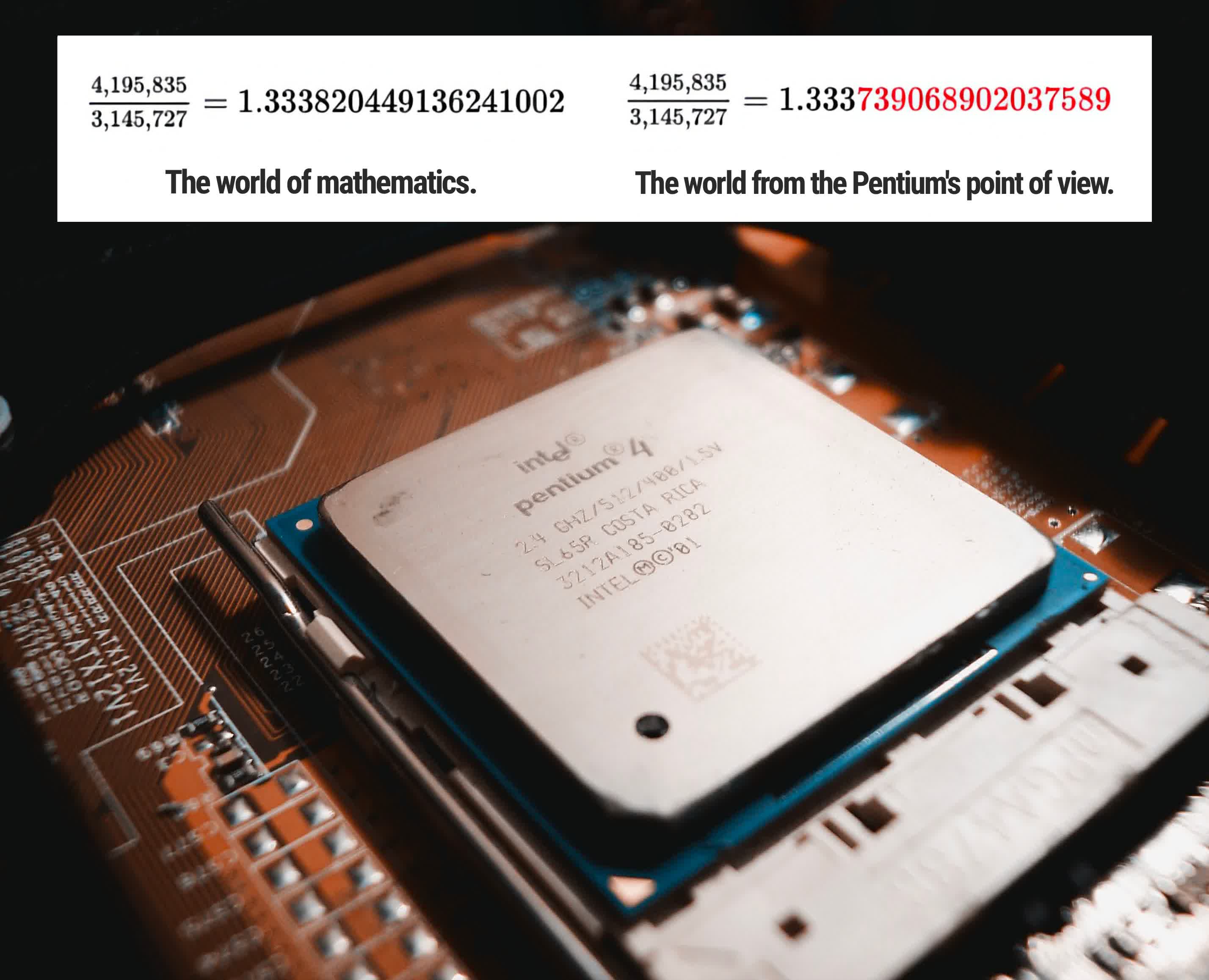Welcome to a fundamental area of computer design: how numbers are represented in hardware! This can ultimately mean the difference between a blazing fast machine and a costly $475 million bug – Pentium 4, anyone?
You are using an out of date browser. It may not display this or other websites correctly.
You should upgrade or use an alternative browser.
You should upgrade or use an alternative browser.
Number Representations in Computer Hardware, Explained
- Thread starter ma3mool
- Start date
m3tavision
Posts: 1,733 +1,510
Thank you for this wonderful article...
We use to play number games in College... and leave binary messages on door boards..!
We use to play number games in College... and leave binary messages on door boards..!
kira setsu
Posts: 888 +1,071
I'm not good enough at math to understand much but it was a very interesting read.
Bamda
Posts: 619 +323
This is an awesome article. Thanks for giving us a refresher on the magic of numbers in Computer Hardware.
Hodor
Posts: 765 +513
AdamNovagen
Posts: 68 +78
This is the kind of article that got me on TS in the first place. Shame they turned out to only make up like 1 out of every 40 or 50, but I'm nevertheless grateful for this quality content.
Tetr1s
Posts: 58 +50
I had to read through this article twice to make sure I was retaining the information correctly lmao
John Staerck
Posts: 30 +4
A very interesting article. Although for me it didn't really explain the need for the bias in the exponent field of floating point representations.
A very interesting article. Although for me it didn't really explain the need for the bias in the exponent field of floating point representations.
Excellent question. The short answer is that the bias allows you to get both positive and negative exponent values. So, if you want to get 2^-3, the bias allows you to encode it in a very straightforward way, by using the 8-bits for 124.
The longer answer is that it has to do with 2's complements, which isn't discussed here at all. It turns out that using a bias just makes life easier for the hardware, then having to interpret a 2's complement number and figure out if it is positive or negative.
Random Commenter
Posts: 29 +25
That's right 'coz 'a fundamental tenant' is one whose dogma pisses all over your karma...Good read, thanks.
One thing: it's a fundamental tenet, not tenant
VcoreLeone
Posts: 289 +147
F**k me if I or most of us will really, truly understand the math that cpu is doing. I think the majority comes here for tech news and review discussion.This is the kind of article that got me on TS in the first place. Shame they turned out to only make up like 1 out of every 40 or 50, but I'm nevertheless grateful for this quality content.
Antias
Posts: 103 +96
Wow
I'm kinda shocked that I actually understood most (not all) of that...
Maybe there's life left in this 59 year old brain after all!
LOL
Thank you for an excellent post, I was quite engrossed to the point my coffee got cold, still held in my hand!
I'm kinda shocked that I actually understood most (not all) of that...
Maybe there's life left in this 59 year old brain after all!
LOL
Thank you for an excellent post, I was quite engrossed to the point my coffee got cold, still held in my hand!
TheBigFatClown
Posts: 1,147 +537
Okay.....It is interesting, fascinating, enlightening and all the good adjectives.... but really, who the hell cares??? You don't even need to understand all of this to design a chip that does it for you. Even the most powerful computer does nothing more than the same basic operations: Add, subtract, divide, multiply and compare!
Great wander down memory lane. and where we are evolving to. Thank you.
For a few of we more mature coders/engineers it would be nice to mention octal base representation.
I had to write some floating point code in Z80 assembler many moons ago which was a great introduction to number representation. It was amazing how many floating point calcs a 4 MHz 8 bit Z80 could execute in a second.
For a few of we more mature coders/engineers it would be nice to mention octal base representation.
I had to write some floating point code in Z80 assembler many moons ago which was a great introduction to number representation. It was amazing how many floating point calcs a 4 MHz 8 bit Z80 could execute in a second.
Similar threads
- Replies
- 15
- Views
- 194
- Replies
- 24
- Views
- 254
Latest posts
-
Nvidia closes in on $4 trillion valuation, surpasses Apple's record
- Theinsanegamer replied
-
Apple iOS 26 will freeze iPhone FaceTime video if it detects nudity
- Squid Surprise replied
-
Open source project is making strides in bringing CUDA to non-Nvidia GPUs
- GhostLegion replied
-
TechSpot is dedicated to computer enthusiasts and power users.
Ask a question and give support.
Join the community here, it only takes a minute.
